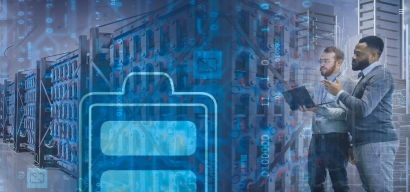
Morten Husbey is the CEO of Wirescan, a Norwegian company that provides real-time cable integrity monitoring solutions. He has a Master of Science in Digital Signal Processing from the University of Oslo and over 15 years of experience in the cable industry, helping organisations improve the safety and reliability of cable systems worldwide.
Can you tell me more about Wirescan and what it does?
Wirescan is a global leader in advanced cable condition assessment and monitoring. Our proprietary Line Impedance Resonance Analysis (LIRA) technology provides non-destructive, precise detection of both local defects and global ageing in cables, ensuring early fault detection and extended asset lifespan.
Our solutions, including real-time monitoring systems and our cloud-based Wirescan Digital platform, have been widely adopted across critical sectors such as offshore wind, energy, and nuclear power and successfully implemented in the most challenging environments, including subsea cable monitoring during offshore installations.
What are the main reasons for the importance of cable health in the energy transition?
Cables are the physical backbone of renewable energy transmission, linking generation to the grid. Failures in this infrastructure can lead to costly outages, disrupt power supply, and weaken overall system resilience. In remote or offshore environments, cable repairs are particularly complex and expensive, making proactive health monitoring vital to minimise risk and extend asset life. Extending the lifespan of installed cables reduces the environmental and financial costs of frequent replacements, supporting sustainability targets and circular economy principles.
Digitalisation is playing a key role in cable health, with monitoring technologies like Wirescan enabling operators to shift from ‘fail and fix’ to ‘predict and prevent’ maintenance, improving efficiency and safety and ultimately enabling a more sustainable energy future.
What are the main impacts of cable failures?
Cable failures can have far-reaching consequences, impacting operations, safety, and finances. They can disrupt critical equipment functionality or interrupt essential communication and control signals, which are all fundamental to maintaining safe and efficient operations. In high-stakes sectors such as offshore wind farms and subsea infrastructure, unexpected cable degradation poses serious risks. It can trigger unplanned outages and lead to costly downtime or equipment replacements.
To mitigate these risks, early detection and condition monitoring are crucial. By identifying issues early, organisations can optimise maintenance strategies, minimise disruptions, and extend the lifespan of their assets.
How do cables age? What is their lifespan and what are the main signs of deterioration to look out for?
The lifespan of cables varies depending on type, application, and environmental conditions. However, a typical cable lifespan can range from 20 to 40 years, with high-quality installations lasting longer under optimal conditions.
Cables age primarily due to thermal, electrical, mechanical, and environmental stresses, which over time degrade the insulation, cause conductor oxidation, and introduce physical damage such as cracks, deformations, or moisture ingress. Signs of deterioration include changes in electrical properties (e.g., capacitance, inductance or both), insulation cracks, shield damage, increased attenuation, or abnormalities at joints and terminations.
Advanced technologies such as Wirescan’s Line Impedance Resonance Analysis (LIRA) can detect progressive impedance variations, enabling early identification of issues. Proactive maintenance based on these indicators can extend cable life and prevent costly failures.
What are the main advancements in cable technology?
Advancements in cable technology aim to improve reliability, enable real-time monitoring, and extend the lifespan of assets through smarter diagnostics and digital tools.
At Wirescan, we are focused on non-destructive cable condition monitoring, helping detect localised defects and overall cable ageing without disrupting operations. The LIRA Live sensor system together with the Wirescan Digital platform can continuously track the condition of energised cables, allowing operators to identify faults as they develop without causing downtime. Additionally, the platform supports cloud-based data management, securely storing test data for easy access, analysis, and trend comparison.
All of this enables more AI-driven diagnostics and predictive modelling for more efficient cable management – enabling utilities, offshore wind developers, and infrastructure operators to shift from reactive repairs to proactive, data-driven cable management strategies.
What are the main methods of predicting cable lifespan?
One of the most effective methods of predicting cable lifespan is continuous analysis of electrical parameters for signs of insulation ageing and physical degradation. We help operators use this method through our patented LIRA technology, which takes precise, non-invasive measurements that help identify both localised faults and overall ageing.
In addition to LIRA, Wirescan Digital is being developed to host a number of other cable condition indicators such as DTS/DAS, TDR, Tangent Delta to mention a few. Utilising Wirescan’s cable expertise to do in depth analysis of several condition indicators will provide a stronger decision basis for the operator and will help to make the right decision for the right cable at the right time.
Through real-time monitoring and historical data through the Wirescan Digital platform, operators and asset managers can better track cable deterioration trends and have a more reliable, data-driven foundation to predict cable lifespan.
How is real-time monitoring improving offshore cable installation?
Real-time monitoring is transforming offshore cable installation by boosting reliability, minimising risk, and supporting smarter decision-making throughout the project lifecycle. During installation, Wirescan provides real-time verification of cable integrity during critical activities like laying, splicing, and termination. Installation teams benefit from live feedback, allowing them to adjust on the fly if any anomalies are detected.
Data is also logged during installation to create a digital baseline for future comparison during routine checks or unexpected issues. Real-time monitoring improves safety and operational uptime, especially in offshore environments, where failures can be complex and expensive to address.
What would you say have been the main successes for Wirescan and how are you building on them?
Since its introduction, Wirescan’s LIRA technology has been successfully implemented across critical sectors such as offshore wind, oil & gas, nuclear power, and subsea infrastructure – with demonstrated capability in monitoring cables over 300 km long and identifying faults with better than 0.3 percent location accuracy. We are proud to have recently announced that global offshore energy leader Jan De Nul has successfully completed multiple subsea cable installation projects using Wirescan, installing over 1,000 km of cables with our technology and now expanding Wirescan Digital across their entire cable-laying fleet.
Building on these achievements, we have also introduced advanced digital tools such as the Wirescan Digital platform, making cable testing more accessible, data-rich, and integrated into modern asset management workflows. These innovations support real-time monitoring, cloud-based data analytics, and predictive maintenance strategies, allowing operators to shift from reactive to proactive cable management.
What will the next ten years for the company look like?
We understand that the future of energy lies in smarter, more efficient energy infrastructure. To strengthen our leadership in the cable monitoring industry, we recently secured new investment from the European venture capital firm Adara Ventures and expanded our leadership team. With this new support, we are more confident than ever in our ability to help even more organisations lower costs, optimise grid performance, and drive the transition toward a more sustainable energy future.
In the coming years, our mission is to remain at the forefront of advancing technologies like AI and machine learning in cable condition assessment and monitoring and push the boundaries of predictive maintenance, redefining what is possible in energy infrastructure.
For additional information:

